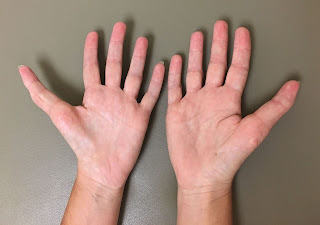One of the benefits to my taking care of kids with birth anomalies of the upper extremity is the opportunity to really come to know the patient and the family, often over many years. This is magnified when more than one child is affected. This is one of the best things about my practice (and one of the limitations of the other parts of my practice)- that is treating a patient and family over years. I really enjoy watching kids grow, learning about their development, and understanding how their birth anomaly does or does not affect their lives.
Another interesting opportunity is talking to and understanding the experience of an affected parent. This is critically important because the experience of the affected parent influences their goals and hopes for their child. It also usually moderates their concerns. What I mean by this is that most parents who are also affected understand that their child is likely to be highly functional and also likely to be well adjusted
Kids with birth anomalies never cease to amaze us and it takes time for ‘new’ or unaffected parents to realize just how well their child will do and how many expectations will be exceeded. Affected parents simply better understand their child’s status and have appropriate expectations for the future.
One particular family has become particularly special to me as I have come to know the whole family and done so over many years. Mom and the kids have triphalangeal thumbs together with an extra thumb. Mom’s triphalangeal thumbs were untreated (although the extra thumbs were removed when she was a child) and she understands the diagnosis and its implications very well. We have performed surgery on her kids due, at least in part, to mom’s understanding of how surgery would be helpful.
A few features to take note of.
1) The thumbs are long. This is due to the extra bone in each of the thumbs (triphalangeal- 3 phalanges instead of the normal thumb with 2 phalangers).
2) The thumbs appear thin, almost like a finger.
3) The thumbs do not rest in the normal position. The thumbs are more in the plane of the fingers- some might call this a 5 fingered hand rather than a hand with 4 fingers and a thumb.
 |
| Adult with triphalangeal thumbs. |
 |
| Adult with triphalangeal thumbs, palm side |
 |
| Adult with triphalangeal thumbs, thumb flexion. Note the length. |
 |
| Adult with triphalangeal thumbs. Note that the thumbs are in the plane of the fingers. |
Nonetheless, the patient has very good function. There are a few challenges with fine motor skills and pinch. This video shows thumb motion and gives a sense of function.
A few relevant blog posts:
The bottom line is that patients with a triphalangeal thumb function well with or without surgery. However, surgery does offer improved function and appearance as confirmed by this family and the choices they have made.

